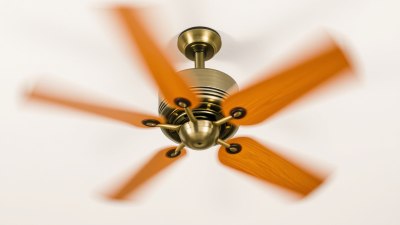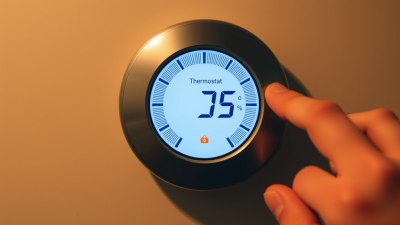How the Ceiling Fan Controls Your Emotional Arc
Explore the surprising connection between ceiling fans and emotional well-being through their rhythmic motion and environmental impact.

Image created with Flux Schnell
In the quiet hum of a ceiling fan spinning steadily above, there lies an unnoticed influence on our emotional states. While ceiling fans are primarily designed for comfort, their gentle rotation and presence sway more than just the temperature of a room; they impact our emotions and mental clarity in subtle yet profound ways. This exploration reveals how an everyday object like a ceiling fan can control, or at least modulate, the complex arc of human emotion.
Understanding Emotional Arcs
An emotional arc represents the progression and fluctuations of feelings experienced over a period of time. In narratives, this arc guides audiences through highs and lows, but in life, it reflects our moods, responses, and psychological states. The factors that influence these arcs are multitudinous—from personal circumstances to environmental cues. Increasingly, research acknowledges the environment's role in shaping emotional well-being, and the ceiling fan is an artifact at that intersection.
The Sensory Influence of Motion
The consistent rotational motion of a ceiling fan creates a rhythmic, repetitive stimulus in the environment. Rhythm is a powerful phenomenon; studies in neuropsychology have demonstrated that rhythmic patterns can synchronize brain waves, facilitating relaxation or heightened alertness. The gentle whirring sound and visual spin of fan blades provide a sensory anchor in the room, which can stabilize mood by fostering a predictable environment. This sensory predictability tends to calm neural activity, potentially preventing emotional volatility.
Temperature Regulation and Mood Stability
The physical comfort offered by ceiling fans cannot be overstated. Thermal discomfort is a known aggravator of negative emotions such as irritability and anxiety. By promoting air circulation and cooling, ceiling fans create a comfortable microclimate. This physiological comfort catalyzes emotional balance. When the body is not distracted by discomfort, the mind can maintain steadier emotional states, thus smoothing the emotional arc. It's a reminder that physical and emotional well-being are deeply intertwined.
Ventilation as a Psychological Refresh
Beyond temperature, air movement facilitates the subtle benefits of ventilation. Stagnant air can contribute to feelings of lethargy, stagnation, or mental fog. The airflow generated by ceiling fans enhances the quality of the air by distributing it more evenly and reducing stuffiness. From a psychological perspective, fresh air is symbolic and tangible renewal. This sensation of freshness can reset cognitive and emotional states, helping to lift mood and clear mental congestion.
Light and Shadow Play Affecting Mood
The spinning blades of a ceiling fan can cast moving shadows across walls and floors. This dynamic interplay of light and shadow introduces an ever-changing environment within a fixed room. Human perception is highly responsive to subtle environmental changes. The shifting patterns can stimulate the visual cortex, potentially diverting attention from distress or rumination. For some, this gentle distraction can facilitate emotional regulation by providing a focal point that breaks negative thought cycles.
Nostalgia and Personal Memories
The ceiling fan often evokes memories and emotions tied to specific environments—childhood homes, tropical vacations, or lazy afternoons. Nostalgia is an emotional state that influences mood profoundly, often bringing comfort and a feeling of connection. For many, the presence of a ceiling fan can stir these sentimental feelings. This emotional priming can steer the emotional arc towards positivity, reinforcing feelings of warmth and belonging.
Ceiling Fans in Communal Spaces
The social aspect of emotional arcs is important. Ceiling fans are staples in many communal and social environments—from family living rooms to restaurants and places of worship. Their presence subliminally signals a shared space and a collective experience. This social nexus contributes to feelings of security and connectedness, essential elements in emotional health. The fan’s operation in such spaces may therefore help regulate group emotional dynamics by enhancing comfort and providing ambient continuity.
Energy Consumption and Psychological Impact
Modern consciousness about energy usage and environmental sustainability also plays into emotional responses. Using ceiling fans instead of air conditioning is often viewed as an eco-friendly choice, which can bolster a person’s sense of agency and well-being. Feeling responsible or proactive about environmental care positively colors the emotional arc. Thus, the fan is not just a device but a symbol of mindful living, promoting emotional uplift through value alignment.
Customization and Emotional Control
Many ceiling fans come with adjustable speeds and light settings, giving users control over their immediate environment. This element of control is critical to emotional regulation. Being able to customize the environment empowers individuals to create spaces that suit their mood needs, whether calming or energizing. The ability to modulate the ceiling fan’s operation aligns with the broader concept of managing one’s emotional arc through intentional action.
The Role of Noise: White Noise and Mood
The sound produced by ceiling fans resembles a form of white noise, known for its capacity to mask disruptive background sounds. White noise facilitates concentration, reduces stress, and aids sleep quality—all factors directly affecting emotional health. The ceiling fan’s hum can therefore provide a sonic buffer, stabilizing the emotional environment and cushioning the emotional arc against sudden external stressors.
Comparative Cultural Significance
Globally, the ceiling fan holds different cultural meanings and practical uses, which shape emotional interpretations. In some cultures, its presence evokes a collective memory of enduring heat and communal resilience. In others, it denotes modernity and progress. These cultural lenses influence how individuals emotionally connect with the fan, demonstrating that emotional arcs are not only shaped by immediate sensory inputs but also by broader cultural narratives and identity.
Implications for Interior Design and Mental Health
Recognizing the ceiling fan’s influence on emotional arcs informs approaches in interior design aimed at enhancing mental well-being. Designers might leverage ceiling fans to balance aesthetics, comfort, and emotional impact. This understanding bridges physical space and psychological experience, encouraging environments that nurture emotional stability, reduce anxiety, and promote positive mood flows throughout the day.
Future Directions in Research
While anecdotal and initial empirical evidence points to ceiling fans as subtle emotional regulators, dedicated research is needed. Future studies could analyze physiological markers such as heart rate variability, cortisol levels, or EEG responses to fan use. Additionally, investigations might explore long-term mood benefits or applications in therapeutic settings. Understanding exact mechanisms will validate the fan’s emotional role and enable optimized designs for mental health support.
Integrating Ceiling Fans into Lifestyle Practices
Individuals can consciously incorporate ceiling fans into daily routines to harness emotional benefits. Pairing fan use with mindfulness exercises, relaxation techniques, or focused work sessions can amplify emotional regulation. Recognizing the fan as a tool—not merely an appliance—transforms interaction with environment into a holistic practice that supports emotional well-being and resilience in everyday life.
In sum, the ceiling fan quietly orchestrates an emotional discourse within our living and communal spaces. Through thermal comfort, rhythmic motion, sensory stimulation, and cultural symbolism, it influences the cadence and contour of our emotional arcs. Appreciating this influence invites a deeper harmony between technology, environment, and human feeling—transforming the fan from a simple cooling instrument into a subtle guardian of emotional balance.











